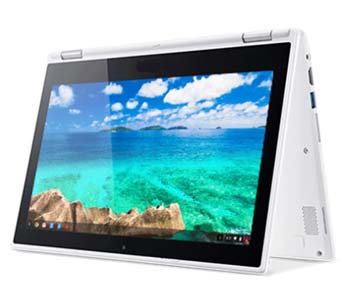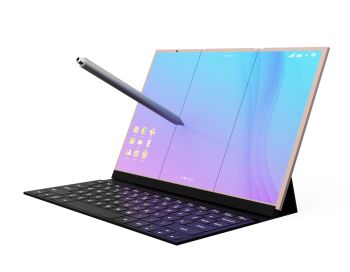Are tablets over? People are buying fewer and fewer of them. However, some newly released information on global sales trends offers a hint at what the future will look like for portable touch screen computers.
The sales of tablet computers have been declining worldwide for the past two and a half years, according to new data from IDC (International Data Corporation). Their Worldwide Quarterly Tablet Tracker report, shows that declining sales in the first quarter of 2017 marks the tenth straight quarter that tablets have experienced a drop in sales. The previous five quarters all recorded double-digit drops.
Tablet sales peaked in 2014, and they have been in decline ever since.
-
“As far as most are aware, the tablet market was created in 2010 with the launch of the original iPad,” said Ryan Reith, program vice president with IDC. “The rate at which the tablet market grew from 2010 to 2013 was unlike many other consumer-oriented device markets we’ve seen before. However, it appears for many reasons consumers became less eager to refresh these devices, or in some instances purchase them at all.”
“Refreshing” is a key issue in the tablet market
While many people rushed to purchase these cool new devices when they first came out – tablets have a much longer shelf life that smartphones. You don’t carry them everywhere with you – or drop them nearly as often. They don’t get used as frequently, charged as often, or suffer as much wear and tear. Consumers don’t feel the need to upgrade every year or two that way they do with their phones.
 The other issue is that slate-only tablets are experiencing an existential crisis. What are they really for?
The other issue is that slate-only tablets are experiencing an existential crisis. What are they really for?
I remember when people at work started showing up to meetings and taking notes by ‘writing’ with their finger on a touchscreen iPad. It looked so cool. Until I actually tried it. That is the least convenient way to take notes. I can type faster and more accurately than the touch screen can record hand writing – and of course writing on a good old fashioned paper with a pen is also about 1,000 times faster.
Tablets are great for surfing the web, checking emails, watching videos, and playing games. But so are laptops. And smartphones. The introduction of the phablet further muddies the issue. These are large-screened smartphones that are also mini-tablets.
The kind of tablet that is actually increasing in sales
It’s that sort of combination devices that marks the future of tablet computers.
 The one category of tablet devices that are seeing increased sales are convertibles. These are touch screen tablets that either have detachable or rotating keyboards – allowing them to be used as slates or full laptops when necessary.
The one category of tablet devices that are seeing increased sales are convertibles. These are touch screen tablets that either have detachable or rotating keyboards – allowing them to be used as slates or full laptops when necessary.
This remedies the main problem with tablets. The touch screen virtual keyboard. These can be great for typing up search queries or short email messages, but trying to write a full article with one is slow and painful.
As a content creator, I’ve never had any interest in a computer without a keyboard. I have a Dell 2-in-1 with the 360-rotating keyboard that flips behind the screen and an Acer Switch 10 tablet with detachable keyboard. Both running Windows 10. I can surf, research, and write without having to stop and run over to a bulky laptop to actually type comfortably.
 The iPad Pro, Microsoft Surface line, Samsung TabPro, Google Pixel C, and the Lenovo Yoga line are just a few of the devices that are playing in this hybrid space. Portable and powerful, long battery life, vibrant touch screen display – and the ability to be productive from anywhere at any time. (Which is how more and more of us work now.)
The iPad Pro, Microsoft Surface line, Samsung TabPro, Google Pixel C, and the Lenovo Yoga line are just a few of the devices that are playing in this hybrid space. Portable and powerful, long battery life, vibrant touch screen display – and the ability to be productive from anywhere at any time. (Which is how more and more of us work now.)
Since the initial novelty factor has worn off, the future of the tablet depends on their ability to adapt to users’ real-world needs.
Source: Worldwide Tablet Shipments Decline 8.5% in the First Quarter as the Slow Migration from Slates to Detachables Continues, According to IDC


